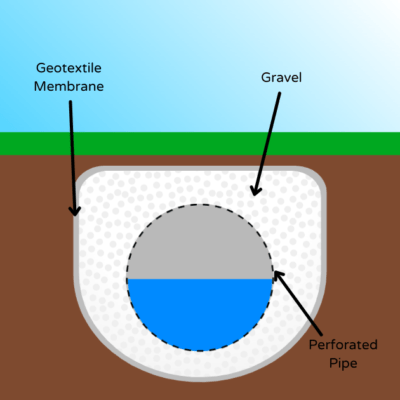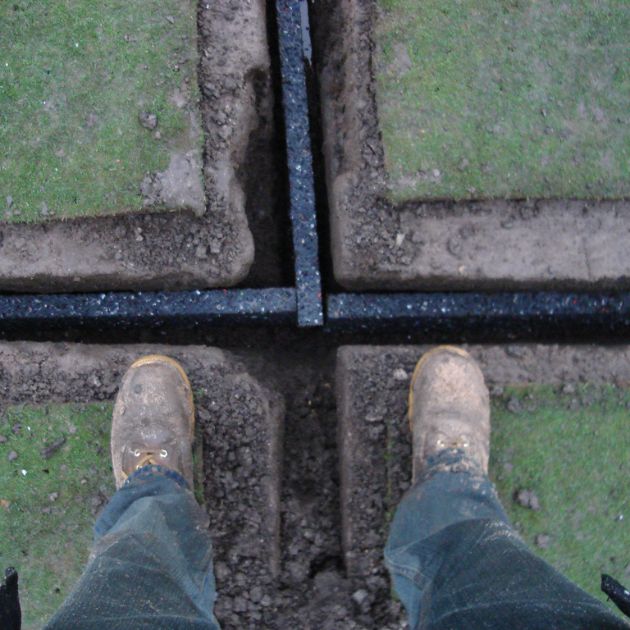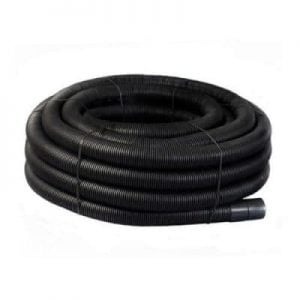Need Some Tips on Installing a French Drain? Check Out Our Latest Post!
Though every installation might differ depending on specific conditions, by the end of this article, you'll grasp a standardized method that can be adjusted to fit your unique situation.
Installing a French drain is relatively straightforward, but it still requires careful attention. Since you'll likely be working around existing structures, there may be buried utilities nearby. If you're unsure, consider reaching out to a professional landscaper, groundworker, or drainage expert for assistance.
What Is a French Drain?
A French drain is a simple yet effective solution for preventing flooding or pooling water. It's essentially a trench dug into the ground, lined with a non-woven geotextile membrane, and filled with gravel (10mm or 20mm) and often a perforated land drainage pipe. The gravel and pipe are entirely wrapped in the geotextile membrane to prevent sediment from clogging the drain. Water flows into the trench, along the pipe, and away from the flooded area.
How Does a French Drain Work?
Water enters the gravel-filled trench and typically flows into a perforated underground pipe within the trench. From there, the water travels along the pipe and empties into a soakaway, drainage ditch, well, or another suitable drainage area. The trench is lined with a non-woven membrane that stops silt and sediment from clogging the drain. French drains are fairly easy to construct and offer an economical and efficient way to improve drainage in an area.
French Drains Installation: Prior Considerations
Jumping straight into the project without careful planning can lead to problems. Before you begin, there are several key considerations to keep in mind.
Planning gives you the confidence you need for a successful French drain installation.
Prior Planning
Without proper planning, you might end up with a trench that doesn't drain effectively or is prone to blockages. Water naturally seeks the lowest point in an area, so it's essential to place your French drain at the lowest part of the landscape.
Consider the type of piping you'll use—whether at all. The right pipework ensures more efficient water drainage and improves functionality. Typically, 110mm perforated drainage pipe or perforated land drainage pipe is used. If there will be heavy loads or traffic over the drain, consider using half-perforated twinwall drainage pipes. These are available at EasyMerchant.
Where Should Your Drain End?
As mentioned earlier, your French drain should end near the lowest point of your trench. This allows water to flow away from flood-prone areas and toward drier regions that can benefit from the moisture. The drain usually empties into a drainage ditch, a soakaway, or an area less prone to flooding.
Now, let’s dive deeper into the installation process:
French Drain Installation: How to Do It Properly

Traditionally, French drains were built using aggregate that allowed water to flow naturally. However, modern methods involve using a pipe for improved drainage efficiency. This reduces the likelihood of sediment blockages and ensures water flows smoothly to its destination.
With a Pipe
Here’s a step-by-step guide for installing a French drain with a pipe:
- Choose where you want the water to drain, ideally at the lowest point.
- Plan the trench route, including the water drainage endpoint, pipe size (if applicable), and ensuring no obstructions like pipes, cables, or trees.
- Decide what to do with the soil excavated during trenching. You might reuse some of it later, or arrange for its removal.
- Plan the trench width using 200-300mm as a guideline. The length depends on the amount of water to be drained. Overestimating is safer than underestimating.
- Dig the trench with a mini digger or by hand, ensuring a slope of at least 45 degrees and a minimum 1% gradient for smooth water flow.
- Line the trench walls with permeable geotextile fabric to prevent sediment buildup.
- Place a layer of aggregate at the bottom of the trench, filling it up to around a third of the way. Use larger aggregate like 10-20mm pea shingle to minimize blockages.
- Insert the perforated land drain pipe at the bottom of the trench, with holes facing down. This is crucial for effective water removal.
- Fill the trench with pea shingle until it’s slightly below the surface, ensuring the whole structure is wrapped in the membrane to prevent soil intrusion.
- Finally, cover the French drain with leftover soil or decorative elements to blend it seamlessly into your landscape.
Without a Pipe
If you lack piping and fabric, you can still construct a basic French drain following traditional principles, though it won’t be as effective or durable.
Follow steps 1-5 and then:
- Fill the trench with aggregate, starting with the base layer and filling it up to about a third of the way. Without a pipe, water will still flow through the aggregate and into the desired area.
- Be extra cautious when covering the French drain to avoid debris falling in and causing blockages.
- Regular maintenance is essential to keep the drain functioning optimally.
Another option for a pipeless French drain is using Enviroflow drainage planks. These are 1-meter sections of 100% recycled material allowing water to pass through without clogging. Simply insert them into a pre-dug trench and cover them back over without needing geotextile protection or professional tools, making them ideal for smaller garden projects.

How Much Does it Cost to Install a French Drain?
French drain costs can vary widely based on factors such as size, material quality, and whether you hire professionals.
Here’s a rough cost guide to help estimate your budget:
- 1.5m x 30m Non-Woven Geotextile Fabric (100 GSM) – ~£60
- 100mm x 25m Perforated Land Drainage Pipe – ~£80
- 7 x 20mm Graded Aggregate (1 tonne) – ~£60
Shop French Drains:

Land Drainage Pipe Coils – Black
Sliding Rail,Adjustable Slide Rail,Sus201 Slide Rail,Brass Slide Rail
JANGMEN MOON SHOWER SANITARYWARE CO.,LTD , https://www.moonshowerglobal.com